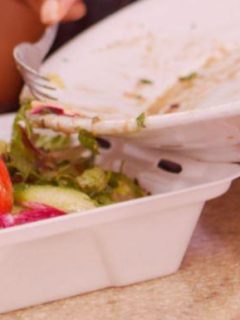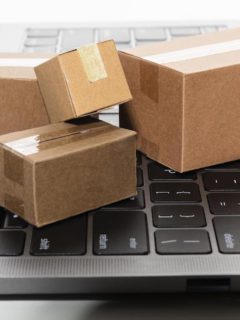The design of a customised carton package is not a matter of chance. Indeed, the package must, on the one hand, meet the need for protection of the products, in particular by offering a suitable cardboard flute. On the other hand, the criterion of optimising delivery costs is essential, and is organised partly around the weight/volume of the packaging.
The packaging board must provide an optimal customer experience by allowing quick and easy unpacking. The choice of materials is also an important element, as recyclability and biodegradability are nowadays essential criteria. Finally, the design of the package should save time in the packaging chain.
Discover the 5 steps to making a custom carton.
1. Drawing up the specifications for the packaging
.
The specifications specify the technical specifications that the packaging must meet.
Gathering information relevant to the manufacturer
The specification details various information that enables the manufacturer to design appropriate packaging. Specifically, this document may include this type of data:
- the type of package desired (single, double, or triple flute);
- the expectations in terms of quality;
- the dimensions;
- the size, volume and weight of the product intended for packaging;
- the nature of the products to be sent;
- the elements to be included on the packaging;
- the packaging and routing of the packaging;
Choosing the right carton packaging
A carton package should be light, strong, and allow for space optimization. This material has a large number of advantages, especially if your wish is to turn to a sustainable manufacturing process. The package is a significant part of the customer experience.
It even has a strong impact on the brand’s image. It is therefore important to opt for the manufacturing of a quality carton, representative of the products contained and your brand, generating trust on the consumer side.
2. Designing the brief for the packaging manufacturer
The content of the brief
It is essential to design an accurate package design brief in order to achieve an optimal result in line with your expectations. To do this, you need to follow certain steps:
- tell the manufacturer the purpose of the package creation, in other words, the context of use;
- point out any constraints that the manufacturer must face, including writing a clear and precise technical specification;
- describe your company, its values and identity, in order to provide the manufacturer with all the information necessary for the creation of a packaging with the brand’s image;
- direct the manufacturer towards pistes of inspiration allowing him to best visualise your expectations.
A step not to be neglected
A well-designed brief is essential to save time on your company’s side, but also on the packaging manufacturer’s side. Get the manufacturer as much information as possible about the context for which you want to start making this bespoke packaging. This allows them to discern your objective.
Designing a comprehensive brief avoids the need to go back and forth waiting for the desired product.

3. The design of a prototype of the packaging by the manufacturer
The design of a prototype packaging by goes through several steps.
Validating the future product and its technical feasibility
This step is of crucial importance in the process of manufacturing the carton.
Indeed, the prototype allows the validation of the product. After completing the structural design using a software solution, the manufacturer transfers the data to the cutting plotter.
The slots, cutting lines or perforation lines are indicated in order to guide the tool. After the prototype has been cut, it can be folded by the manufacturer. This is a sample: this first package is therefore part of an exclusive production.
Before committing to a manufacturer to start production of your packaging, pay attention to the advertised delivery times. Custom carton design may require longer lead times. It is therefore essential to check the availability of the manufacturer for your project.
Choosing eco-friendly materials
For your packaging strategy, make sure you choose a manufacturer committed to environmental responsibility. Eco-friendly packaging is a real conversion lever. It is widely acclaimed by consumers and is now a major criterion for choice.
If cardboard is by nature an environmentally friendly material, you can always improve your environmental impact. To do this, don’t hesitate to ask for the use of recycled, biodegradable, or eco-designed cardboard when manufacturing the carton. This is a significant bonus in reducing the carbon footprint and improving the customer experience.
4. Testing the packaging on a small portion of shipments
Custom packaging is produced in pre-production in order to be tested in real life, i.e. on a small portion of shipments. The sampling allows its resistance, its protective role, and its simplicity of use for order pickers to be assessed. The packaging test also helps to count shipping costs. The aim is to get costs in line with the initial project estimate.
Finally, as the customer is the focus, testing in real-life conditions allows us to evaluate the user experience. To do this, it can be interesting to ask customers for their opinion on the new packaging regarding packaging, unboxing, or even the condition of their package upon receipt. In exchange for their feedback on the cardboard packaging, you can offer them a free product, or send them a promo code valid on their next order.
5. Rolling out final packaging to your entire logistics process
As an unavoidable factor in reliable logistics, final packaging must therefore perform its functions, namely ease of handling, product protection, transportation, but also its marketing functions. Sampling allowed you to do a background check with the objective of securing the technical, marketing, and budgetary aspects of the packaging. Was the packaging test successful? Your orders can now be shipped in the final package.
There is nothing like custom-made, personalised packaging to reach your target audience and foster customer loyalty. It is a real marketing tool, increasing the visibility of your company and allowing you to stand out from the competition. Make it a lever for your brand!















